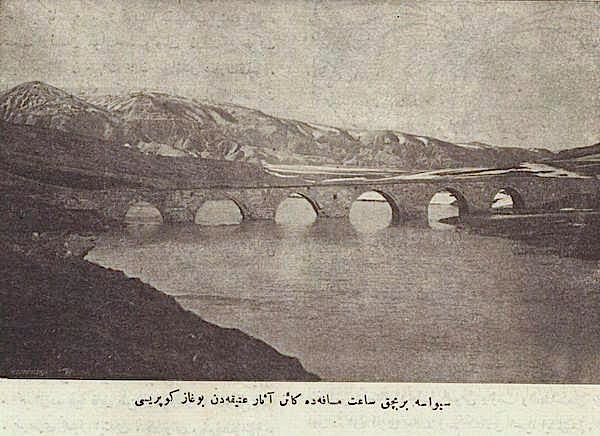Toponym
Located in the upper valley of the Halys (Trk.: Kızılırmak), the Ottoman kaza bears the name of its main seat, Koçhisar (‘Ram Castle’; renamed Hafik in 1926).
Armenian Population
In 1914, 13,055 Armenians lived in 30 Armenian localities of this kaza, maintaining 30 churches, two monasteries and 28 schools with a total enrolment of 2,483.[1] The administrative seat of the kaza, Koçhisar, “had barely 3,000 inhabitants, 2,037 of whom were Armenians.”[2]
Destruction
The first arrests took place in early April 1915, both in the principal town and in the villages. “Some of those arrested were put to death in Seyfe Gorge or near the Boğaz Bridge; others were interned in the city [Sivas] in the medreses of Şifahdiye and Gök. But the systematic arrests of the males did not begin until June, particularly in the villages, where 2,000 men, including all the village priests in the kaza, were confined in Koçhisar’s prison and slain before the deportation, in line with the usual procedure. Every night, these men were taken from the city in groups of 100 and killed in Seyfe Gorge or near the Boğaz Bridge.”[3]

In the second half of June 1915, the Armenian inhabitants of the kazas of Koçhisar and Koçkiri were the first in their region to be deported to the Syrian desert.[4] The first convoy from the kaza of Koçhisar left around 20 June. “It was followed by a convoy made up of inhabitants of Koçhisar, 500 from them males. After suffering a first attack by Çerkez [Circassians] from Kuştepe, this convoy reached the village of Ulash, the population of which had, for the time being, been allowed to remain so that it could bring in the wheat harvest. Here the convoy was combined with another comprising 1,000 women and 200 men from the rest of the kaza. Two days later the group arrived in Hasançelebi, where 200 adolescents were removed from the convoy and killed. The next day, at Hekimhan, the old men were removed from the convoy and massacred. After crossing the Kırk Göz Bridge on the fifth day, the deportation reached Fırıncilar in 36 hours. They remained there for seven days, during which a number of girls and boys were abducted.
This convoy was in fact one of the first to test the system put in place by the authorities crossing the mountains of Nal Töken. According to a survivor, Zeynel Bey (…) ordered that the 200 men still alive be killed, the deportees pillaged, and the women be stripped in Kanlı Dere Gorge, where thousands of corpses were already strewn over the ground. After passing through Adıyaman, the convoy reached the Göksu, near Akçadağ. A number of women were thrown into the river there by Kurds; others were abducted. As they went on towards Suruc, the survivors were combined with what was left of other convoys, thus forming a caravan of 1,500 people. About half of them remained in Suruc, while others continued their trek toward Birecik, Bab, and finally Hama, their ‘place of residence’, which a few dozen women from Koçhisar managed to reach in fall 1915.”[5]